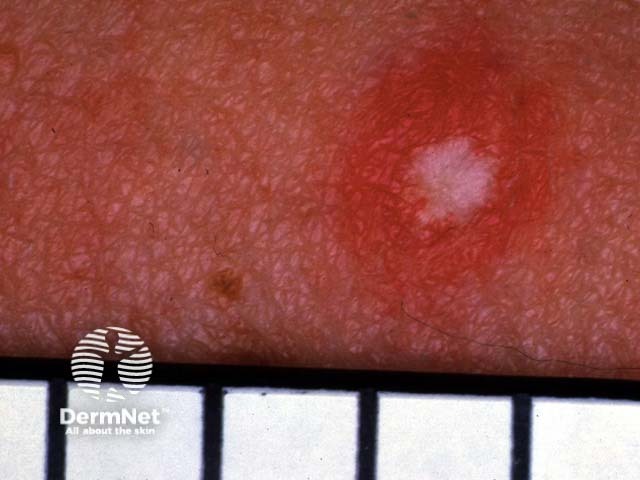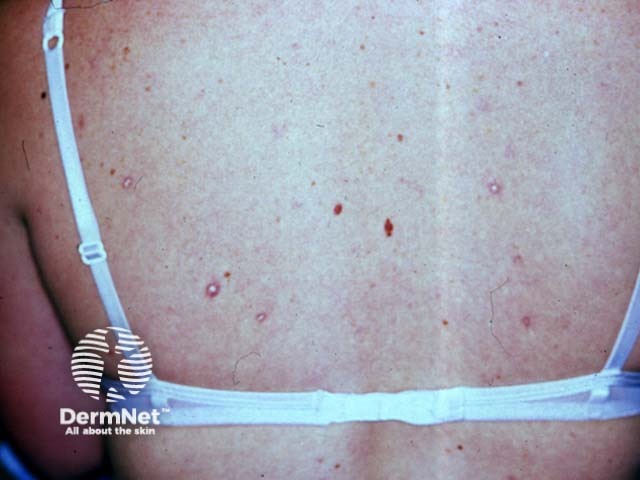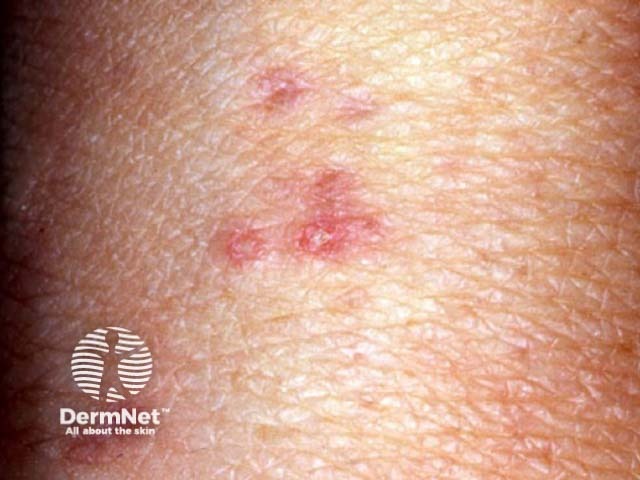Main menu
Common skin conditions

NEWS
Join DermNet PRO
Read more
Quick links
Malignant atrophic papulosis — extra information
Malignant atrophic papulosis
Author: Dr Darshan Singh MBChB, Registrar, Department of Dermatology, Waikato Hospital, Hamilton, New Zealand, 2001. Updated by A/Prof Amanda Oakley, January 2016.
Introduction Demographics Causes Clinical features Diagnosis Treatment Outlook
What is malignant atrophic papulosis?
Malignant atrophic papulosis is a form of occlusive small vessel vasculopathy. The blood vessels affected include those supplying the skin, gastrointestinal tract and central nervous system.
Malignant atrophic papulosis is also known as Degos disease.
Who gets malignant atrophic papulosis?
Malignant atrophic papulosis is a very rare disorder. It generally occurs in young Caucasian adults but has been reported in other races and at all ages.
What causes malignant atrophic papulosis?
The underlying cause of the occlusion of the blood vessels in malignant atrophic papulosis is at present unknown. It is likely due to a genetic mutation of complement or some other clotting factor. Several other theories have been suggested.
What are the clinical features of malignant atrophic papulosis?
Skin
Skin lesions are the characteristic feature of malignant atrophic papulosis. The lesions are usually multiple and occur predominantly on the trunk and arms. They usually start as small red raised spots of 2–5 mm in diameter. After a few days, they enlarge and develop a central white spot that is depressed in comparison to the red skin around it. They heal leaving depressed porcelain-white scars.
Gastrointestinal system
Gastrointestinal complications of malignant atrophic papulosis in 50% of patients with systemic disease result from lack of blood supply to the lining of the gut. They may lead to serious complications including perforation of the bowel. The usual symptoms are sudden onset of abdominal pain or gastrointestinal bleeding (vomiting blood or passing blood with the bowel motion).
Nervous system
Occlusion of blood vessels in the brain in malignant atrophic papulosis in 20% of patients can lead to strokes, headaches, epilepsy or non-specific neurological symptoms, such as memory loss or altered sensation.
Other organs
Other organs sometimes affected by malignant atrophic papulosis include eyes, kidneys, heart and liver.
Skin lesions of malignant atrophic papulosis

Malignant atrophic papulosis

Malignant atrophic papulosis

Malignant atrophic papulosis
How is malignant atrophic papulosis diagnosed?
Malignant atrophic papulosis is diagnosed clinically and by skin biopsy revealing occlusion of small blood vessels.
There are no specific blood tests, and most results are normal. Further investigations including imaging will depend on systemic symptoms and signs.
What is the treatment for malignant atrophic papulosis?
Anti-platelet drugs like aspirin and dipyridamole may reduce the number of new lesions in some patients with only skin involvement.
There have been reports of benefit from experimental treatments using eculizumab (monoclonal antibody binding C5 complement) and treprostinil (prostacyclin analogue).[1]
What is the outlook for malignant atrophic papulosis?
Malignant atrophic papulosis is generally regarded as a serious vascular disease because it leads to the involvement of multiple organs and results in death within 2–3 years. But in some cases, the disease is limited to the skin and appears fairly benign (harmless).
References
- Malignant Atrophic Papulosis Is Challenging to Diagnose, Treat – The Rhematologist, July 2014
Other websites
- Degos Disease — Medscape Reference
- NORD on Degos disease
- Malignant atrophic papulosis
- Degos Disease Patients Support Network
- Omim on Degos Online Mendelian Inheritance In Man
